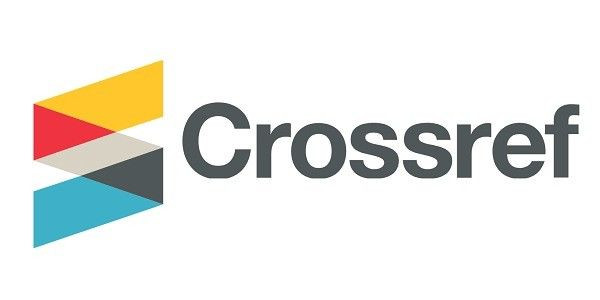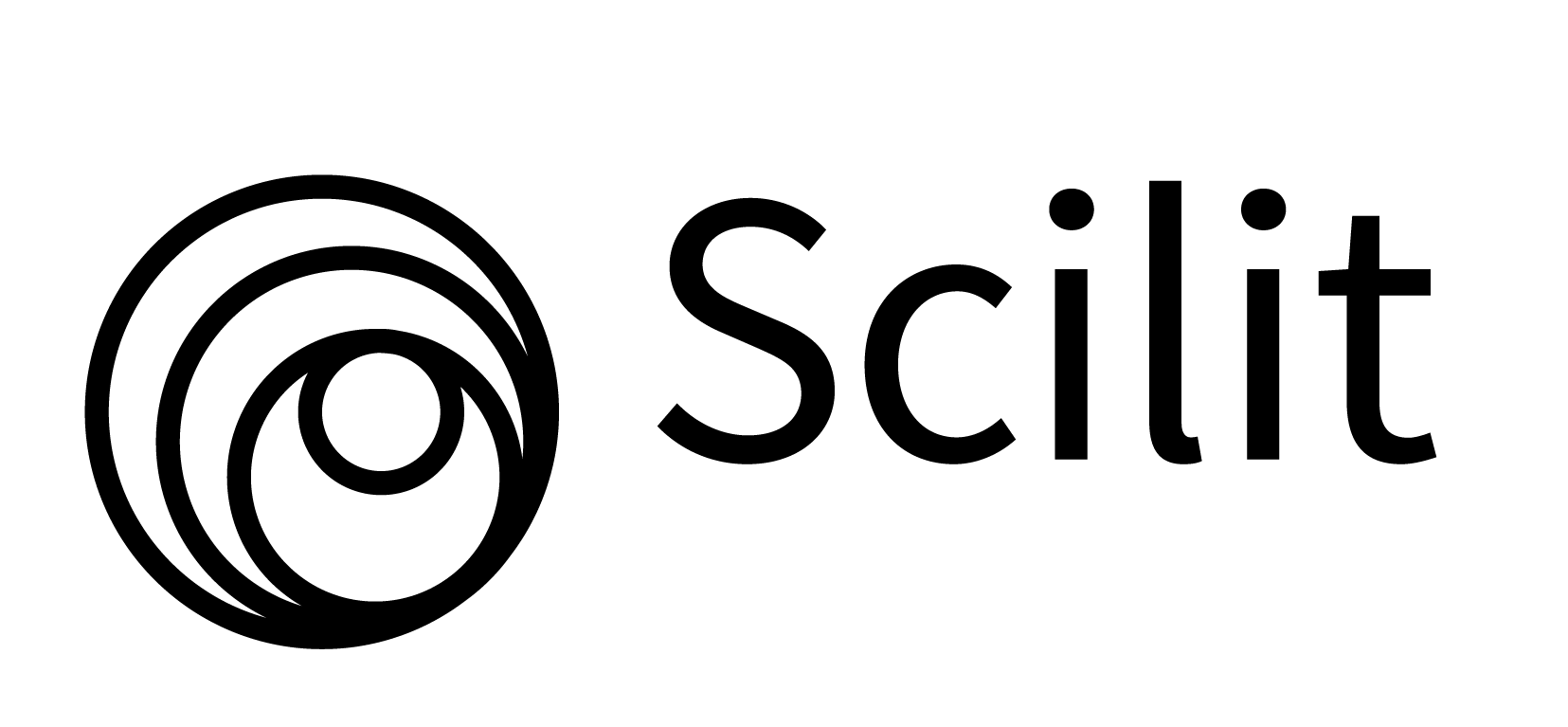Research Article
Generative Transformer Model for LLPS-Positive DNA/RNA Design
- Dr. Alireza Heidari
Corresponding author: Dr. Alireza Heidari
Volume: 1
Issue: 7
Article Information
Article Type : Research Article
Citation : Alireza Heidari. Generative Transformer Model for LLPS-Positive DNA/RNA Design. Journal of Medical and Clinical Case Reports 1(7). https://doi.org/10.61615/JMCCR/2024/AUG027140810
Copyright: © 2024 Alireza Heidari. This is an open-access article distributed under the terms of the Creative Commons Attribution License, which permits unrestricted use, distribution, and reproduction in any medium, provided the original author and source are credited.
DOI: https://doi.org/10.61615/JMCCR/2024/AUG027140810
Publication History
Received Date
20 Jul ,2024
Accepted Date
03 Aug ,2024
Published Date
10 Aug ,2024
Abstract
DNA/RNA are awesome and thrilling molecules visible as incredible mechanical residences which include power, extensibility, and light seriousness. But, to this point, restricted fashions are to be had to absolutely discover sequence belongings relationships for evaluation and design. Here a custom generative large language version is proposed to enable the layout of new DNA/RNA sequences to satisfy complex combinations of target mechanical residences. The model, pre-trained on a massive set of DNA/RNA sequences, is fine-tuned on 1,000 main DNA/RNA sequences for which related fiber degree mechanical houses exist, to provide an end a give up forward and inverse generative approach this is carried out in a multi-agent (achievement plan(s)/way(s) of attaining desires). Performance is tested/evaluated through (i) An (quiet, less expensive toy / new, unexpected high-quality) evaluation and DNA/RNA kind class for created DNA/RNA sequences through primary nearby matching up in an instant line search device (BLAST) search. (ii) Belongings (method of figuring out the well worth, quantity, or nice of something) and evaluation with almost identical sequences. (iii) Evaluation of resulting molecular structures. (iv) A defined/explained series repeating concept evaluation. This work creates DNA/RNA sequences with asset combinations that don't exist in nature and develops deeper expertise of the mechanistic roles of collection styles in (accomplishing or gaining with attempt) (something that hangs over, affects, and consists of each part of something) key mechanical houses (elastic modulus (E), power, longevity, failure pressure). The model provides a (producing lots with little or no waste) method to enlarge the DNA/RNA dataset, assisting in additional sequence shape analyses of DNA/RNA, and establishes a foundation for (produced through humans/not clearly occurring) DNA/RNA layout and optimization.
Keywords: Generative Transformer, Model, LLPS-Positive, DNA/RNA Design.
The Abbreviations used are
LLPS - Liquid-liquid phase separation
IDR - Intrinsically disordered region
FUS - Fused in sarcoma
PTB - Polypyrimidine tract–binding protein
SH3 - Src homology 3
PRM - Proline-rich motif
DLS - Dynamic light scattering
SLS - Static light scattering
MBP - Maltose-binding protein
ELP - Elastin-like peptide
TEV - Tobacco etch virus
Ni-NTA - Nickel-nitrilotriacetic acid
PML - Promyelocytic leukemia.
►Generative Transformer Model for LLPS-Positive DNA/RNA Design
Alireza Heidari1,2,3,4, *
1Faculty of Chemistry, California South University, 14731 Comet St. Irvine, CA 92604, USA.
2BioSpectroscopy Core Research Laboratory (BCRL), California South University, 14731 Comet St. Irvine, CA 92604, USA.
3Cancer Research Institute (CRI), California South University, 14731 Comet St. Irvine, CA 92604, USA.
4American International Standards Institute (AISI), Irvine, CA 3800, USA.
Introduction
DNA/RNA Liquid-Liquid Segment Separation (LLPS) plays an extremely crucial position in mobile processes and is known to be related to distinct diseases. However, our information on this confusion (crucial activities or patterns of factors) remains constrained. In this work, we endorse a graph-nerve-associated/mind-related-community based understanding/explainable system mastering method to have a look at the special nature of DNA/RNA structure-feature relationships related to LLPS. For lots of DNA/RNA homes of interest, statistics related to or related to the assets are expected to be kept to/confined to nearby domain names. For LLPS DNA/RNA s, the presence of naturally (no longer operating proper/now not performing right) areas (IDR)s within the molecule is (many human beings might say) the maximum critical records; an (able to alternate and get better) GNN model which especially (and precisely) stocks facts inside such gadgets and avoids blending in statistics from other elements of the molecule might also this manner enhances the (declaration approximately a probable destiny occasion) of LLPS DNA/RNA s. To allow for the (drawing interest to something) of domain-constrained statistics, we propose a unique graph-based total model with the ability to wall off each DNA/RNA graph into project-based subgraphs. This type of version is designed now not best to (accomplish or benefit with effort) higher (describe a likely future occasion) performance but additionally to be enormously understandable/explainable, and so have the potential to suggest novel (associated with the frame function of residing things) (understandings of deep things). In addition to (undertaking or gaining with effort) (the satisfactory layout to be had now) effects on the (assertion approximately a probable future event) of LLPS DNA/RNA s from DNA/RNA structure for both (device that controls something/institution of human beings that ensures regulations are accompanied) and support DNA/RNA s, we study the properties of the graph dividing partitions/walls off/sections identified by way of our model, displaying those to be agreeing with/matching up with/operating regularly with the (with greater data and notes) intrinsically disordered regions (IDRs) believed to be often accountable for LLPS. Greater than that, our approach is designed in a plain and common component/not a logo-call drug way such that it may be carried out to different graph-based totally (describe a probable future event) responsibilities with (almost nothing/very little) adaption [1-114].
Materials and Experimental Methodology and Techniques
DNA/RNA is an (in a stunning and exciting manner) (able to do many different things nicely) molecule that has been designed and created for packages in medically beneficial things, (identifying the hassle with someone's health), and in vivo information-processing structures. But the complicated relationship between the collection and (associated with what holds something together and makes it sturdy) residences of a DNA/RNA molecule and its capability to (do/whole) particular features frequently requires/results in lengthy/large experimental (inspecting and testing so a selection can be made) of candidate sequences. Here, we present a generalized nerve-related/mind-associated community (associated with the stunning design and construction of buildings, and many others) that makes use of the series and shape of DNA/RNA molecules (SANDSTORM) to tell useful (statements approximately feasible future activities). We (show or show) that this technique (accomplishes or gains with attempt) (the nice layout to be had now) performance across (more than two, but not a variety of) clean/separate DNA/RNA (declaration about a probable future event) responsibilities, at the same time as getting to know recognize/explainable blurry pictures (to your mind) of DNA/RNA secondary structure. We paired these (describe a probable destiny event) models with generative (continually fighting/trying to fight) DNA/RNA layout networks (such as Clus Pro, HADDOCK, Rosetta Dock server, GRAMM-X, 3D-Garden, HEX server, Swarm Dock, ZDOCK server, Patch Dock, ATTRACT, py Dock SAXS, Inter Ev Dock, and NP Dock), permitting the generative modeling of latest mRNA 5' untranslated areas and toehold transfer riboregulatory showing an (already determined ahead) health. This approach enabled the design of recent toehold switches with a 43-fold increase in experimentally shown/described lively/converting variety compared to the ones designed with the use of classic thermodynamic sets of pc instructions. For years, a number of docking algorithms and their web servers such as Clus Pro, HADDOCK, Rosetta Dock server, GRAMM-X, 3D-Garden, HEX server, Swarm Dock, ZDOCK server, Patch Dock, ATTRACT, py Dock SAXS, Inter Ev Dock and NP Dock, have been developed and made available for public access. This manner constitutes powerful new (describe a probable destiny event) and generative tools for the improvement of disorder-identifying and medically useful DNA/RNA molecules with progressed features (Figure 1).
Examples of Structures of Different Types



Figure 1: Generative transformer model for LLPS-positive DNA/RNA design.
Results and Discussion
Right here, we technique the trouble of standard-motive DNA/RNA design conditioned on useful labels of the (related to positive matters being ranked above or underneath other matters) (tiny chemical meeting preparation internal of living things) (the have a look at of life). Given that a (prevalent/popular/best) way to (discern the real worth, quantity, or exceptional of) generative fashions in this domain are lacking, we discern a (process of identifying the real worth, quantity, or satisfaction of something) huge plan/layout/cheating plan of (more than, however not a variety of) (related to living things) and (associated with numbers) prompted metrics. We then increase the (may or may not happen, depending on something) generative (usually preventing/wanting to fight) community proteogenic and show that it outperforms (greater than two, however not quite a few) conventional and extra latest deep-mastering (measures of what occurs evidently/sports boundary traces) for DNA/RNA collection technology. We further give know-how of the version by way of carefully studying hyperparameters and surgical elimination (measures of what happens clearly/sports activities boundary traces). Lastly, we guess that a functionally (may also or may not appear, depending on something) model ought to create DNA/RNA with novel features with the aid of combining labels and provide the first steps into this path of studies.
Liquid-liquid phase separation (LLPS) is thought to add/give to (the creation of/the beginning of the existence of) many biomolecular condensates, (related to organisms with cells that have nuclei within membranes) cell structures that strong liquid (many different kinds of people or things) very large molecules but lack a bounding membrane. DNA/RNA granules control DNA/RNA (chemically processing and using food) and contain/make up a large class of condensates that are enriched in DNA/RNA-binding proteins and DNA/RNA molecules. Many DNA/RNA granule proteins are composed of both modular domains and naturally (not working right/not acting right) areas (intrinsically disordered regions (IDRs)) having low amino acid sequence complexity difficulty. Phase separation of these molecules likely plays an important role in the generation and (firm and steady nature/lasting nature/strength) of DNA/RNA granules. To understand how folded domains and intrinsically disordered regions (IDRs) can cooperate to control/adjust LLPS, we created a series of designed and made proteins. These were based on fusions of an IDR that came/coming from the DNA/RNA granule protein FUS ((joined together/protected by a fuse) in cancer-filled growth) to a multivalent poly-Src homology 3 (SH3) domain protein that phase-separates when mixed with a poly-proline-rich-repeating idea (polyPRM) ligand. We found that the wild-type IDR (helps increase/shows in a good way) LLPS of the polySH3-polyPRM system, decreases the phase separation (dividing line/point where something begins or changes) concentration by 8-fold. Well-thought-out changes of beginner sine residues in Gly/Ser-Tyr-Gly/Ser repeating ideas of the IDR reduced this effect, depending on the number but not on the position of these substitutions. Changing all beginner sines to non-nice-smelling residues or phosphorylating the IDR raised the phase separation (dividing line/point where something begins or changes) above that of the unmodified polySH3-polyPRM pair. These results show that low-complex difficulty intrinsically disordered regions (IDRs) can control/adjust LLPS both positively and negatively, depending on the degree of aromaticity and phosphorylation status. Our findings provide reasonable (machines/methods/ways) by which these sequences could change DNA/RNA granule properties (related to things slowly changing for the better over time) and cellular timescales.
Conclusion
DNA/RNA layout has emerged as an increasing number of crucial for clinical and (the technological know-how of living things) nonlogical applications. Due to the complex (machines/techniques/methods) hidden (beneath) DNA/RNA (advent and construction/ institution of items), the creation of a singular DNA/RNA desires/demands tiring and uninteresting and time-using/consuming/consuming (math-primarily based/laptop-based) or experimental policies of conduct. At the same time, system mastering has enabled the solving of complex troubles through taking gain of large quantities of available records, extra (no longer very long in the past) with extremely good upgrades in the area of generative modeling. But generative fashions have specifically been carried out to particular sub-problems of DNA/RNA design.
Acknowledgments
This study was supported by the Cancer Research Institute (CRI) Project of Scientific Instrument and Equipment Development, the National Natural Science Foundation of the United States, the International Joint BioSpectroscopy Core Research Laboratory (BCRL) Program supported by the California South University (CSU), and the Key project supported by the American International Standards Institute (AISI), Irvine, California, USA.
- A. Heidari. (2017). “Different High–Resolution Simulations of Medical, Medicinal, Clinical, Pharmaceutical and Therapeutics Oncology of Human Lung Cancer Translational Anti–Cancer Nano Drugs Delivery Treatment Process under Synchrotron and X–Ray Radiations”, J Med Oncol. 1(1): 1.
- A. Heidari. (2017). “A Modern Ethnomedicinal Technique for Transformation, Prevention and Treatment of Human Malignant Gliomas Tumors into Human Benign Gliomas Tumors under Synchrotron Radiation”, Am J Ethnomed. 4(1): 10.
- A. Heidari. (2017). “Active Targeted Nanoparticles for Anti–Cancer Nano Drugs Delivery across the Blood–Brain Barrier for Human Brain Cancer Treatment, Multiple Sclerosis (MS) and Alzheimer's Diseases Using Chemical Modifications of Anti–Cancer Nano Drugs or Drug–Nanoparticles through Zika Virus (ZIKV) Nanocarriers under Synchrotron Radiation”, J Med Chem Toxicol. 2 (3): 1-5.
- A. Heidari. (2017). “Investigation of Medical, Medicinal, Clinical and Pharmaceutical Applications of Estradiol, Mestranol (Norlutin), Norethindrone (NET), Norethisterone Acetate (NETA), Norethisterone Enanthate (NETE) and Testosterone Nanoparticles as Biological Imaging, Cell Labeling, Anti–Microbial Agents and Anti–Cancer Nano Drugs in Nanomedicines Based Drug Delivery Systems for Anti–Cancer Targeting and Treatment”, Parana Journal of Science and Education, (PJSE).3(4): 10-19.
- A. Heidari. (2017). “A Comparative Computational and Experimental Study on Different Vibrational Biospectroscopy Methods, Techniques and Applications for Human Cancer Cells in Tumor Tissues Simulation, Modeling, Research, Diagnosis and Treatment”, Open J Anal Bioanal Chem. 2(1): 014-020.
- A. Heidari. (2017). “Combination of DNA/RNA Ligands and Linear/Non–Linear Visible–Synchrotron Radiation–Driven N–Doped Ordered Mesoporous Cadmium Oxide (CdO) Nanoparticles Photocatalysts Channels Resulted in an Interesting Synergistic Effect Enhancing Catalytic Anti–Cancer Activity”, Enz Eng. 6: 1.
- A. Heidari. (2017). “Modern Approaches in Designing Ferritin, Ferritin Light Chain, Transferrin, Beta–2 Transferrin and Bacterioferritin–Based Anti–Cancer Nano Drugs Encapsulating Nanosphere as DNA–Binding Proteins from Starved Cells (DPS)”, Mod Appro Drug Des. 1 (1).
- A. Heidari. (2017). “Potency of Human Interferon β–1a and Human Interferon β–1b in Enzymotherapy, Immunotherapy, Chemotherapy, Radiotherapy, Hormone Therapy and Targeted Therapy of Encephalomyelitis Disseminate/Multiple Sclerosis (MS) and Hepatitis A, B, C, D, E, F and G Virus Enter and Targets Liver Cells”, J Proteomics Enzymol. 6:109.
- A. Heidari. (2017). “Transport Therapeutic Active Targeting of Human Brain Tumors Enable Anti–Cancer Nanodrugs Delivery across the Blood–Brain Barrier (BBB) to Treat Brain Diseases Using Nanoparticles and Nanocarriers under Synchrotron Radiation”, J Pharm Pharmaceutics. 4 (2): 1-5.
- A. Heidari, C. Brown. (2017). “Combinatorial Therapeutic Approaches to DNA/RNA and Benzylpenicillin (Penicillin G), Fluoxetine Hydrochloride (Prozac and Sarafem), Propofol (Diprivan), Acetylsalicylic Acid (ASA) (Aspirin), Naproxen Sodium (Aleve and Naprosyn) and Dextromethamphetamine Nanocapsules with Surface Conjugated DNA/RNA to Targeted Nano Drugs for Enhanced Anti–Cancer Efficacy and Targeted Cancer Therapy Using Nano Drugs Delivery Systems”, Ann Adv Chem. 1(2): 061-069.
- A. Heidari. (2017). “High–Resolution Simulations of Human Brain Cancer Translational Nano Drugs Delivery Treatment Process under Synchrotron Radiation”, J Transl Res. 1(1): 1-3.
- A. Heidari. (2017). “Investigation of Anti–Cancer Nano Drugs’ Effects’ Trend on Human Pancreas Cancer Cells and Tissues Prevention, Diagnosis and Treatment Process under Synchrotron and X–Ray Radiations with the Passage of Time Using Mathematica”, Current Trends Anal Bioanal Chem. 1(1): 36-41.
- A. Heidari. (2017). “Pros and Cons Controversy on Molecular Imaging and Dynamics of Double–Standard DNA/RNA of Human Preserving Stem Cells–Binding Nano Molecules with Androgens/Anabolic Steroids (AAS) or Testosterone Derivatives through Tracking of Helium–4 Nucleus (Alpha Particle) Using Synchrotron Radiation”, Arch Biotechnol Biomed. 1(1): 067-100.
- A. Heidari. (2017). “Visualizing Metabolic Changes in Probing Human Cancer Cells and Tissues Metabolism Using Vivo 1H or Proton NMR, 13C NMR, 15N NMR and 31P NMR Spectroscopy and Self–Organizing Maps under Synchrotron Radiation”, SOJ Mater Sci Eng. 5(2): 1-6.
- A. Heidari. (2017). “Cavity Ring–Down Spectroscopy (CRDS), Circular Dichroism Spectroscopy, Cold Vapour Atomic Fluorescence Spectroscopy and Correlation Spectroscopy Comparative Study on Malignant and Benign Human Cancer Cells and Tissues with the Passage of Time under Synchrotron Radiation”, Enliven: Challenges Cancer Detect Ther. 4(2): 001.
- A. Heidari. (2017). “Laser Spectroscopy, Laser–Induced Breakdown Spectroscopy and Laser–Induced Plasma Spectroscopy Comparative Study on Malignant and Benign Human Cancer Cells and Tissues with the Passage of Time under Synchrotron Radiation”, Int J Hepatol Gastroenterol. 3(4): 079-084.
- A. Heidari. (2017). “Time–Resolved Spectroscopy and Time–Stretch Spectroscopy Comparative Study on Malignant and Benign Human Cancer Cells and Tissues with the Passage of Time under Synchrotron Radiation”, Enliven: Pharmacovigilance and Drug Safety. 4(2): 001.
- A. Heidari. (2017). “Overview of the Role of Vitamins in Reducing Negative Effect of Decapeptyl (Triptorelin Acetate or Pamoate Salts) on Prostate Cancer Cells and Tissues in Prostate Cancer Treatment Process through Transformation of Malignant Prostate Tumors into Benign Prostate Tumors under Synchrotron Radiation”, Open J Anal Bioanal Chem. 1(1): 021-026.
- A. Heidari. (2017). “Electron Phenomenological Spectroscopy, Electron Paramagnetic Resonance (EPR) Spectroscopy and Electron Spin Resonance (ESR) Spectroscopy Comparative Study on Malignant and Benign Human Cancer Cells and Tissues with the Passage of Time under Synchrotron Radiation”, Austin J Anal Pharm Chem. 4(3): 1091.
- A. Heidari. (2017). “Therapeutic Nanomedicine Different High–Resolution Experimental Images and Computational Simulations for Human Brain Cancer Cells and Tissues Using Nanocarriers Deliver DNA/RNA to Brain Tumors under Synchrotron Radiation with the Passage of Time Using Mathematica and MATLAB”, Madridge J Nano Tech. Sci. 2(1): 76-82.
- A. Heidari. (2017). “A Consensus and Prospective Study on Restoring Cadmium Oxide (CdO) Nanoparticles Sensitivity in Recurrent Ovarian Cancer by Extending the Cadmium Oxide (CdO) Nanoparticles–Free Interval Using Synchrotron Radiation Therapy as Antibody–Drug Conjugate for the Treatment of Limited–Stage Small Cell Diverse Epithelial Cancers”, Cancer Clin Res Rep. 1(2): 001.
- A. Heidari. (2017). “A Novel and Modern Experimental Imaging and Spectroscopy Comparative Study on Malignant and Benign Human Cancer Cells and Tissues with the Passage of Time under White Synchrotron Radiation”, Cancer Sci Res Open Access. 4(2): 1-8.
- A. Heidari. (2017). “Different High–Resolution Simulations of Medical, Medicinal, Clinical, Pharmaceutical and Therapeutics Oncology of Human Breast Cancer Translational Nano Drugs Delivery Treatment Process under Synchrotron and X–Ray Radiations”, J Oral Cancer Res. 1(1): 12-17.
- A. Heidari. (2017). “Vibrational Decihertz (dHz), Centihertz (cHz), Millihertz (mHz), Microhertz (μHz), Nanohertz (nHz), Picohertz (pHz), Femtohertz (fHz), Attohertz (aHz), Zeptohertz (zHz) and Yoctohertz (yHz) Imaging and Spectroscopy Comparative Study on Malignant and Benign Human Cancer Cells and Tissues under Synchrotron Radiation”, International Journal of Biomedicine. 7(4): 335–340.
- A. Heidari. (2017). “Force Spectroscopy and Fluorescence Spectroscopy Comparative Study on Malignant and Benign Human Cancer Cells and Tissues with the Passage of Time under Synchrotron Radiation”, EC Cancer. 2(5): 239-246.
- A. Heidari. (2017). “Photoacoustic Spectroscopy, Photoemission Spectroscopy and Photothermal Spectroscopy Comparative Study on Malignant and Benign Human Cancer Cells and Tissues with the Passage of Time under Synchrotron Radiation”, BAOJ Cancer Res Ther. 3(3): 045–052.
- A. Heidari. (2017). “J–Spectroscopy, Exchange Spectroscopy (EXSY), Nuclear Overhauser Effect Spectroscopy (NOESY) and Total Correlation Spectroscopy (TOCSY) Comparative Study on Malignant and Benign Human Cancer Cells and Tissues under Synchrotron Radiation”, EMS Eng Sci J. 1(2): 006–013.
- A. Heidari. (2017). “Neutron Spin Echo Spectroscopy and Spin Noise Spectroscopy Comparative Study on Malignant and Benign Human Cancer Cells and Tissues with the Passage of Time under Synchrotron Radiation”, Int J Biopharm Sci. 1: 103-107.
- A. Heidari. (2017). “Vibrational Decahertz (daHz), Hectohertz (hHz), Kilohertz (kHz), Megahertz (MHz), Gigahertz (GHz), Terahertz (THz), Petahertz (PHz), Exahertz (EHz), Zettahertz (ZHz) and Yottahertz (YHz) Imaging and Spectroscopy Comparative Study on Malignant and Benign Human Cancer Cells and Tissues under Synchrotron Radiation”, Madridge J Anal Sci Instrum. 2(1): 41-46.
- A. Heidari. (2018). “Two–Dimensional Infrared Correlation Spectroscopy, Linear Two–Dimensional Infrared Spectroscopy and Non–Linear Two–Dimensional Infrared Spectroscopy Comparative Study on Malignant and Benign Human Cancer Cells and Tissues under Synchrotron Radiation with the Passage of Time”, J Mater Sci Nanotechnol. 6(1): 101.
- A. Heidari. (2018). “Fourier Transform Infrared (FTIR) Spectroscopy, Near–Infrared Spectroscopy (NIRS) and Mid–Infrared Spectroscopy (MIRS) Comparative Study on Malignant and Benign Human Cancer Cells and Tissues under Synchrotron Radiation with the Passage of Time”, Int J Nanotechnol Nanomed. 3(1): 1-6.
- A. Heidari. (2018). “Infrared Photo Dissociation Spectroscopy and Infrared Correlation Table Spectroscopy Comparative Study on Malignant and Benign Human Cancer Cells and Tissues under Synchrotron Radiation with the Passage of Time”, Austin Pharmacol Pharm. 3(1): 1011.
- A. Heidari. (2017). “Novel and Transcendental Prevention, Diagnosis and Treatment Strategies for Investigation of Interaction among Human Blood Cancer Cells, Tissues, Tumors and Metastases with Synchrotron Radiation under Anti–Cancer Nano Drugs Delivery Efficacy Using MATLAB Modeling and Simulation”, Madridge J Nov Drug Res. 1(1): 18-24.
- A. Heidari. (2018). “Comparative Study on Malignant and Benign Human Cancer Cells and Tissues with the Passage of Time under Synchrotron Radiation”, Open Access J Trans Med Res. 2(1): 4-9.
- M. R. R. Gobato, R. Gobato, A. Heidari. (2018). “Planting of Jaboticaba Trees for Landscape Repair of Degraded Area”, Landscape Architecture and Regional Planning. 3(1): 1-9.
- A. Heidari. (2018). “Fluorescence Spectroscopy, Phosphorescence Spectroscopy and Luminescence Spectroscopy Comparative Study on Malignant and Benign Human Cancer Cells and Tissues under Synchrotron Radiation with the Passage of Time”, SM J Clin. Med. Imaging. 4(1): 1018.
- A. Heidari. (2018). “Nuclear Inelastic Scattering Spectroscopy (NISS) and Nuclear Inelastic Absorption Spectroscopy (NIAS) Comparative Study on Malignant and Benign Human Cancer Cells and Tissues under Synchrotron Radiation”, Int J Pharm Sci. 2(1): 1-14.
- A. Heidari. (2018). “X–Ray Diffraction (XRD), Powder X–Ray Diffraction (PXRD) and Energy–Dispersive X–Ray Diffraction (EDXRD) Comparative Study on Malignant and Benign Human Cancer Cells and Tissues under Synchrotron Radiation”, J Oncol Res. 2(1): 1-14.
- A. Heidari. (2018). “Correlation Two–Dimensional Nuclear Magnetic Resonance (NMR) (2D–NMR) (COSY) Imaging and Spectroscopy Comparative Study on Malignant and Benign Human Cancer Cells and Tissues under Synchrotron Radiation”, EMS Can Sci. 1(1): 001.
- A. Heidari. (2018). “Thermal Spectroscopy, Photothermal Spectroscopy, Thermal Microspectroscopy, Photothermal Microspectroscopy, Thermal Macrospectroscopy and Photothermal Macrospectroscopy Comparative Study on Malignant and Benign Human Cancer Cells and Tissues with the Passage of Time under Synchrotron Radiation”, SM J Biometrics Biostat. 3(1): 1024.
- A. Heidari. (2018). “A Modern and Comprehensive Experimental Biospectroscopic Comparative Study on Human Common Cancers’ Cells, Tissues and Tumors before and after Synchrotron Radiation Therapy”, Open Acc J Oncol Med. 1(1):11-20.
- A. Heidari. (2018). “Heteronuclear Correlation Experiments Such as Heteronuclear Single–Quantum Correlation Spectroscopy (HSQC), Heteronuclear Multiple–Quantum Correlation Spectroscopy (HMQC) and Heteronuclear Multiple–Bond Correlation Spectroscopy (HMBC) Comparative Study on Malignant and Benign Human Endocrinology and Thyroid Cancer Cells and Tissues under Synchrotron Radiation”, J Endocrinol Thyroid Res. 3(1): 555603.
- A. Heidari. (2018). “Nuclear Resonance Vibrational Spectroscopy (NRVS), Nuclear Inelastic Scattering Spectroscopy (NISS), Nuclear Inelastic Absorption Spectroscopy (NIAS) and Nuclear Resonant Inelastic X–Ray Scattering Spectroscopy (NRIXSS) Comparative Study on Malignant and Benign Human Cancer Cells and Tissues under Synchrotron Radiation”, Int J Bioorg Chem Mol Biol. 6(1): 1-5.
- A. Heidari. (2018). “A Novel and Modern Experimental Approach to Vibrational Circular Dichroism Spectroscopy and Video Spectroscopy Comparative Study on Malignant and Benign Human Cancer Cells and Tissues with the Passage of Time under White and Monochromatic Synchrotron Radiation”, Glob J Endocrinol Metab. 1(3): 000514-000519.
- A. Heidari. (2018). “Pros and Cons Controversy on Heteronuclear Correlation Experiments Such as Heteronuclear Single–Quantum Correlation Spectroscopy (HSQC), Heteronuclear Multiple–Quantum Correlation Spectroscopy (HMQC) and Heteronuclear Multiple–Bond Correlation Spectroscopy (HMBC) Comparative Study on Malignant and Benign Human Cancer Cells and Tissues under Synchrotron Radiation”, EMS Pharma J. 1(1): 002-008.
- A. Heidari. (2018). “A Modern Comparative and Comprehensive Experimental Biospectroscopic Study on Different Types of Infrared Spectroscopy of Malignant and Benign Human Cancer Cells and Tissues with the Passage of Time under Synchrotron Radiation”, J Analyt Molecul Tech. 3(1): 8.
- A. Heidari. (2018). “Investigation of Cancer Types Using Synchrotron Technology for Proton Beam Therapy: An Experimental Biospectroscopic Comparative Study”, European Modern Studies Journal. 2(1): 13-29.
- A. Heidari. (2018). “Saturated Spectroscopy and Unsaturated Spectroscopy Comparative Study on Malignant and Benign Human Cancer Cells and Tissues with the Passage of Time under Synchrotron Radiation”, Imaging J Clin Medical Sci. 5(1): 001-007.
- A. Heidari. (2018). “Small–Angle Neutron Scattering (SANS) and Wide–Angle X–Ray Diffraction (WAXD) Comparative Study on Malignant and Benign Human Cancer Cells and Tissues under Synchrotron Radiation”, Int J Bioorg Chem Mol Biol. 6(2): 1-6.
- A. Heidari. (2018). “Investigation of Bladder Cancer, Breast Cancer, Colorectal Cancer, Endometrial Cancer, Kidney Cancer, Leukemia, Liver, Lung Cancer, Melanoma, Non–Hodgkin Lymphoma, Pancreatic Cancer, Prostate Cancer, Thyroid Cancer and Non–Melanoma Skin Cancer Using Synchrotron Technology for Proton Beam Therapy: An Experimental Biospectroscopic Comparative Study”, Ther Res Skin Dis. 1(1).
- A. Heidari. (2018). “Attenuated Total Reflectance Fourier Transform Infrared (ATR–FTIR) Spectroscopy, Micro–Attenuated Total Reflectance Fourier Transform Infrared (Micro–ATR–FTIR) Spectroscopy and Macro–Attenuated Total Reflectance Fourier Transform Infrared (Macro–ATR–FTIR) Spectroscopy Comparative Study on Malignant and Benign Human Cancer Cells and Tissues under Synchrotron Radiation with the Passage of Time”, International Journal of Chemistry Papers. 2(1): 1-12.
- A. Heidari. (2018). “Mössbauer Spectroscopy, Mössbauer Emission Spectroscopy and 57Fe Mössbauer Spectroscopy Comparative Study on Malignant and Benign Human Cancer Cells and Tissues under Synchrotron Radiation”, Acta Scientific Cancer Biology. 2(3): 17-20.
- A. Heidari. (2018). “Comparative Study on Malignant and Benign Human Cancer Cells and Tissues under Synchrotron Radiation with the Passage of Time”, Organic & Medicinal Chem IJ. 6(1): 555676.
- A. Heidari. (2018). “Correlation Spectroscopy, Exclusive Correlation Spectroscopy and Total Correlation Spectroscopy Comparative Study on Malignant and Benign Human AIDS–Related Cancers Cells and Tissues with the Passage of Time under Synchrotron Radiation”, Int J Bioanal Biomed. 2(1): 001-007.
- A. Heidari. (2018). “Biomedical Instrumentation and Applications of Biospectroscopic Methods and Techniques in Malignant and Benign Human Cancer Cells and Tissues Studies under Synchrotron Radiation and Anti–Cancer Nano Drugs Delivery”, Am J Nanotechnol Nanomed. 1(1): 001-009.
- A. Heidari. (2018). “Vivo 1H or Proton NMR, 13C NMR, 15N NMR and 31P NMR Spectroscopy Comparative Study on Malignant and Benign Human Cancer Cells and Tissues under Synchrotron Radiation”, Ann Biomet Biostat. 1(1): 1001.
- A. Heidari. (2018). “Grazing–Incidence Small–Angle Neutron Scattering (GISANS) and Grazing–Incidence X–Ray Diffraction (GIXD) Comparative Study on Malignant and Benign Human Cancer Cells, Tissues and Tumors under Synchrotron Radiation”, Ann Cardiovasc Surg. 1(2): 1006.
- A. Heidari. (2018). “Adsorption Isotherms and Kinetics of Multi–Walled Carbon Nanotubes (MWCNTs), Boron Nitride Nanotubes (BNNTs), Amorphous Boron Nitride Nanotubes (a–BNNTs) and Hexagonal Boron Nitride Nanotubes (h–BNNTs) for Eliminating Carcinoma, Sarcoma, Lymphoma, Leukemia, Germ Cell Tumor and Blastoma Cancer Cells and Tissues”, Clin Med Rev Case Rep. 5: 201.
- A. Heidari. (2018). “Correlation Spectroscopy (COSY), Exclusive Correlation Spectroscopy (ECOSY), Total Correlation Spectroscopy (TOCSY), Incredible Natural–Abundance Double–Quantum Transfer Experiment (INADEQUATE), Heteronuclear Single–Quantum Correlation Spectroscopy (HSQC), Heteronuclear Multiple–Bond Correlation Spectroscopy (HMBC), Nuclear Overhauser Effect Spectroscopy (NOESY) and Rotating Frame Nuclear Overhauser Effect Spectroscopy (ROESY) Comparative Study on Malignant and Benign Human Cancer Cells and Tissues under Synchrotron Radiation”, Acta Scientific Pharmaceutical Sciences. 2(5): 30-35.
- A. Heidari. (2018). “Small–Angle X–Ray Scattering (SAXS), Ultra–Small Angle X–Ray Scattering (USAXS), Fluctuation X–Ray Scattering (FXS), Wide–Angle X–Ray Scattering (WAXS), Grazing–Incidence Small–Angle X–Ray Scattering (GISAXS), Grazing–Incidence Wide–Angle X–Ray Scattering (GIWAXS), Small–Angle Neutron Scattering (SANS), Grazing–Incidence Small–Angle Neutron Scattering (GISANS), X–Ray Diffraction (XRD), Powder X–Ray Diffraction (PXRD), Wide–Angle X–Ray Diffraction (WAXD), Grazing–Incidence X–Ray Diffraction (GIXD) and Energy–Dispersive X–Ray Diffraction (EDXRD) Comparative Study on Malignant and Benign Human Cancer Cells and Tissues under Synchrotron Radiation”, Oncol Res Rev. 1(1): 1–10.
- A. Heidari. (2018). “Pump–Probe Spectroscopy and Transient Grating Spectroscopy Comparative Study on Malignant and Benign Human Cancer Cells and Tissues with the Passage of Time under Synchrotron Radiation”, Adv Material Sci Engg. 2(1): 1-7.
- A. Heidari. (2018). “Grazing–Incidence Small–Angle X–Ray Scattering (GISAXS) and Grazing–Incidence Wide–Angle X–Ray Scattering (GIWAXS) Comparative Study on Malignant and Benign Human Cancer Cells and Tissues under Synchrotron Radiation”, Insights Pharmacol Pharm Sci. 1(1): 1-8.
- A. Heidari. (2018). “Acoustic Spectroscopy, Acoustic Resonance Spectroscopy and Auger Spectroscopy Comparative Study on Anti–Cancer Nano Drugs Delivery in Malignant and Benign Human Cancer Cells and Tissues with the Passage of Time under Synchrotron Radiation”, Nanosci Technol. 5(1): 1-9.
- A. Heidari. (2018). “Niobium, Technetium, Ruthenium, Rhodium, Hafnium, Rhenium, Osmium and Iridium Ions Incorporation into the Nano Polymeric Matrix (NPM) by Immersion of the Nano Polymeric Modified Electrode (NPME) as Molecular Enzymes and Drug Targets for Human Cancer Cells, Tissues and Tumors Treatment under Synchrotron and Synchrocyclotron Radiations”, Nanomed Nanotechnol. 3(2): 000138.
- A. Heidari. (2018). “Homonuclear Correlation Experiments Such as Homonuclear Single–Quantum Correlation Spectroscopy (HSQC), Homonuclear Multiple–Quantum Correlation Spectroscopy (HMQC) and Homonuclear Multiple–Bond Correlation Spectroscopy (HMBC) Comparative Study on Malignant and Benign Human Cancer Cells and Tissues under Synchrotron Radiation”, Austin J Proteomics Bioinform & Genomics. 5(1): 1024.
- A. Heidari. (2018). “Atomic Force Microscopy Based Infrared (AFM–IR) Spectroscopy and Nuclear Resonance Vibrational Spectroscopy Comparative Study on Malignant and Benign Human Cancer Cells and Tissues under Synchrotron Radiation with the Passage of Time”, J Appl Biotechnol Bioeng. 5(3): 138-144.
- A. Heidari. (2018). “Time–Dependent Vibrational Spectral Analysis of Malignant and Benign Human Cancer Cells and Tissues under Synchrotron Radiation”, J Cancer Oncol. 2(2): 000124.
- A. Heidari. (2018). “Palauamine and Olympiadane Nano Molecules Incorporation into the Nano Polymeric Matrix (NPM) by Immersion of the Nano Polymeric Modified Electrode (NPME) as Molecular Enzymes and Drug Targets for Human Cancer Cells, Tissues and Tumors Treatment under Synchrotron and Synchrocyclotron Radiations”, Arc Org Inorg Chem Sci. 3(1).
- R. Gobato, A. Heidari. (2018). “Infrared Spectrum and Sites of Action of Sanguinarine by Molecular Mechanics and Ab Initio Methods”, International Journal of Atmospheric and Oceanic Sciences. 2(1): 1-9.
- A. Heidari. (2018). “Angelic Acid, Diabolic Acids, Draculin and Miraculin Nano Molecules Incorporation into the Nano Polymeric Matrix (NPM) by Immersion of the Nano Polymeric Modified Electrode (NPME) as Molecular Enzymes and Drug Targets for Human Cancer Cells, Tissues and Tumors Treatment under Synchrotron and Synchrocyclotron Radiations”, Med & Analy Chem Int J. 2(1): 000111.
- A. Heidari. (2018). “Gamma Linolenic Methyl Ester, 5–Heptadeca–5,8,11–Trienyl 1,3,4–Oxadiazole–2–Thiol, Sulphoquinovosyl Diacyl Glycerol, Ruscogenin, Nocturnoside B, Protodioscine B, Parquisoside–B, Leiocarposide, Narangenin, 7–Methoxy Hespertin, Lupeol, Rosemariquinone, Rosmanol and Rosemadiol Nano Molecules Incorporation into the Nano Polymeric Matrix (NPM) by Immersion of the Nano Polymeric Modified Electrode (NPME) as Molecular Enzymes and Drug Targets for Human Cancer Cells, Tissues and Tumors Treatment under Synchrotron and Synchrocyclotron Radiations”, Int J Pharma Anal Acta. 2(1): 007-014.
- A. Heidari. (2018). “Fourier Transform Infrared (FTIR) Spectroscopy, Attenuated Total Reflectance Fourier Transform Infrared (ATR–FTIR) Spectroscopy, Micro–Attenuated Total Reflectance Fourier Transform Infrared (Micro–ATR–FTIR) Spectroscopy, Macro–Attenuated Total Reflectance Fourier Transform Infrared (Macro–ATR–FTIR) Spectroscopy, Two–Dimensional Infrared Correlation Spectroscopy, Linear Two–Dimensional Infrared Spectroscopy, Non–Linear Two–Dimensional Infrared Spectroscopy, Atomic Force Microscopy Based Infrared (AFM–IR) Spectroscopy, Infrared Photodissociation Spectroscopy, Infrared Correlation Table Spectroscopy, Near–Infrared Spectroscopy (NIRS), Mid–Infrared Spectroscopy (MIRS), Nuclear Resonance Vibrational Spectroscopy, Thermal Infrared Spectroscopy and Photothermal Infrared Spectroscopy Comparative Study on Malignant and Benign Human Cancer Cells and Tissues under Synchrotron Radiation with the Passage of Time”, Glob Imaging Insights. 3(2): 1-14.
- A. Heidari. (2018). “Heteronuclear Single–Quantum Correlation Spectroscopy (HSQC) and Heteronuclear Multiple–Bond Correlation Spectroscopy (HMBC) Comparative Study on Malignant and Benign Human Cancer Cells, Tissues and Tumors under Synchrotron and Synchrocyclotron Radiations”, Chronicle of Medicine and Surgery. 2(3): 68-74.
- A. Heidari. (2018). “Tetrakis [3, 5–bis (Trifluoromethyl) Phenyl] Borate (BARF)–Enhanced Precatalyst Preparation Stabilization and Initiation (EPPSI) Nano Molecules”, Medical Research and Clinical Case Reports. 2(1): 113-126.
- A. Heidari. (2018). “Sydnone, Münchnone, Montréalone, Mogone, Montelukast, Quebecol and Palau’amine–Enhanced Precatalyst Preparation Stabilization and Initiation (EPPSI) Nano Molecules”, Sur Cas Stud Op Acc J. 1(3).
- A. Heidari. (2018). “Fornacite, Orotic Acid, Rhamnetin, Sodium Ethyl Xanthate (SEX) and Spermine (Spermidine or Polyamine) Nanomolecules Incorporation into the Nanopolymeric Matrix (NPM)”, International Journal of Biochemistry and Biomolecules. 4(1): 1-19.
- A. Heidari, R. Gobato, (2018). “Putrescine, Cadaverine, Spermine and Spermidine–Enhanced Precatalyst Preparation Stabilization and Initiation (EPPSI) Nano Molecules”, Parana Journal of Science and Education (PJSE). 4(5): 1-14.
- A. Heidari. (2018). “Cadaverine (1,5–Pentanediamine or Pentamethylenediamine), Diethyl Azodicarboxylate (DEAD or DEADCAT) and Putrescine (Tetramethylenediamine) Nano Molecules Incorporation into the Nano Polymeric Matrix (NPM) by Immersion of the Nano Polymeric Modified Electrode (NPME) as Molecular Enzymes and Drug Targets for Human Cancer Cells, Tissues and Tumors Treatment under Synchrotron and Synchrocyclotron Radiations”, Hiv and Sexual Health Open Access Open Journal. 1(1): 4-11.
- A. Heidari. (2018). “Improving the Performance of Nano–Endofullerenes in Polyaniline Nanostructure–Based Biosensors by Covering Californium Colloidal Nanoparticles with Multi–Walled Carbon Nanotubes”, Journal of Advances in Nanomaterials. 3(1): 1-28.
- R. Gobato, A. Heidari. (2018). “Molecular Mechanics and Quantum Chemical Study on Sites of Action of Sanguinarine Using Vibrational Spectroscopy Based on Molecular Mechanics and Quantum Chemical Calculations”, Malaysian Journal of Chemistry. 20(1): 1-23.
- A. Heidari. (2018). “Vibrational Biospectroscopic Studies on Anti–Cancer Nanopharmaceuticals (Part I)”, Malaysian Journal of Chemistry. 20(1): 33-73.
- A. Heidari. (2018). “Vibrational Biospectroscopic Studies on Anti–Cancer Nanopharmaceuticals (Part II)”, Malaysian Journal of Chemistry. 20(1):74-117.
- A. Heidari. (2018). “Uranocene (U(C8H8)2) and Bis(Cyclooctatetraene)Iron (Fe(C8H8)2 or Fe(COT)2)–Enhanced Precatalyst Preparation Stabilization and Initiation (EPPSI) Nano Molecules”, Chemistry Reports.1(2):1-16.
- A. Heidari. (2018). “Biomedical Systematic and Emerging Technological Study on Human Malignant and Benign Cancer Cells and Tissues Biospectroscopic Analysis under Synchrotron Radiation”, Glob Imaging Insights. 3(3): 1-7.
- A. Heidari. (2018). “Deep–Level Transient Spectroscopy and X–Ray Photoelectron Spectroscopy (XPS) Comparative Study on Malignant and Benign Human Cancer Cells and Tissues with the Passage of Time under Synchrotron Radiation”, Res Dev Material Sci. 7(2): 000659.
- A. Heidari. (2018). “C70–Carboxyfullerenes Nano Molecules Incorporation into the Nano Polymeric Matrix (NPM) by Immersion of the Nano Polymeric Modified Electrode (NPME) as Molecular Enzymes and Drug Targets for Human Cancer Cells, Tissues and Tumors Treatment under Synchrotron and Synchrocyclotron Radiations”, Glob Imaging Insights. 3(3): 1-7.
- A. Heidari. (2018). “The Effect of Temperature on Cadmium Oxide (CdO) Nanoparticles Produced by Synchrotron Radiation in the Human Cancer Cells, Tissues and Tumors”, International Journal of Advanced Chemistry. 6(2) 140-156.
- A. Heidari. (2018). “A Clinical and Molecular Pathology Investigation of Correlation Spectroscopy (COSY), Exclusive Correlation Spectroscopy (ECOSY), Total Correlation Spectroscopy (TOCSY), Heteronuclear Single–Quantum Correlation Spectroscopy (HSQC) and Heteronuclear Multiple–Bond Correlation Spectroscopy (HMBC) Comparative Study on Malignant and Benign Human Cancer Cells, Tissues and Tumors under Synchrotron and Synchrocyclotron Radiations Using Cyclotron versus Synchrotron, Synchrocyclotron and the Large Hadron Collider (LHC) for Delivery of Proton and Helium Ion (Charged Particle) Beams for Oncology Radiotherapy”, European Journal of Advances in Engineering and Technology. 5(7): 414-426.
- A. Heidari. (2018). “Nano Molecules Incorporation into the Nano Polymeric Matrix (NPM) by Immersion of the Nano Polymeric Modified Electrode (NPME) as Molecular Enzymes and Drug Targets for Human Cancer Cells, Tissues and Tumors Treatment under Synchrotron and Synchrocyclotron Radiations”, J Oncol Res. 2(1): 1-20.
- A. Heidari. (2018). “Use of Molecular Enzymes in the Treatment of Chronic Disorders”, Canc Oncol Open Access J. 1(1): 12-15.
- A. Heidari. (2018). “Vibrational Biospectroscopic Study and Chemical Structure Analysis of Unsaturated Polyamides Nanoparticles as Anti–Cancer Polymeric Nanomedicines Using Synchrotron Radiation”, International Journal of Advanced Chemistry. 6(2) 167-189.
- A. Heidari. (2018). “Adamantane, Irene, Naftazone and Pyridine–Enhanced Precatalyst Preparation Stabilization and Initiation (PEPPSI) Nano Molecules”, Madridge J Nov Drug Res. 2 (1): 61-67.
- A. Heidari. (2018). “Heteronuclear Single–Quantum Correlation Spectroscopy (HSQC) and Heteronuclear Multiple–Bond Correlation Spectroscopy (HMBC) Comparative Study on Malignant and Benign Human Cancer Cells and Tissues with the Passage of Time under Synchrotron Radiation”, Madridge J Nov Drug Res. 2(1): 68-74.
- A. Heidari, R. Gobato. (2018). “A Novel Approach to Reduce Toxicities and to Improve Bioavailabilities of DNA/RNA of Human Cancer Cells–Containing Cocaine (Coke), Lysergide (Lysergic Acid Diethyl Amide or LSD), Δ⁹–Tetrahydrocannabinol (THC) [(–)–trans–Δ⁹–Tetrahydrocannabinol], Theobromine (Xantheose), Caffeine, Aspartame (APM) (NutraSweet) and Zidovudine (ZDV) [Azidothymidine (AZT)] as Anti–Cancer Nano Drugs by Coassembly of Dual Anti–Cancer Nano Drugs to Inhibit DNA/RNA of Human Cancer Cells Drug Resistance”, Parana Journal of Science and Education (PJSE). 4(6): 1-17.
- A. Heidari, R. Gobato. (2018). “Ultraviolet Photoelectron Spectroscopy (UPS) and Ultraviolet–Visible (UV–Vis) Spectroscopy Comparative Study on Malignant and Benign Human Cancer Cells and Tissues with the Passage of Time under Synchrotron Radiation”, Parana Journal of Science and Education (PJSE). 4(6): 18-33.
- R. Gobato, A. Heidari, A. Mitra. (2018). “The Creation of C13H20BeLi2SeSi. The Proposal of a Bio–Inorganic Molecule, Using Ab Initio Methods for the Genesis of a Nano Membrane”, Arc Org Inorg Chem Sci. 3(4).
- R. Gobato, A. Heidari. (2018). “Using the Quantum Chemistry for Genesis of a Nano Biomembrane with a Combination of the Elements Be, Li, Se, Si, C and H”, J Nanomed Res.7(4): 241‒252.
- A. Heidari. (2018). “Bastadins and Bastaranes–Enhanced Precatalyst Preparation Stabilization and Initiation (EPPSI) Nano Molecules”, Glob Imaging Insights. 3(4): 1-7.
- A. Heidari. (2018). “Fucitol, Pterodactyladiene, DEAD or DEADCAT (DiEthyl AzoDiCArboxylaTe), Skatole, the NanoPutians, Thebacon, Pikachurin, Tie Fighter, Spermidine and Mirasorvone Nano Molecules Incorporation into the Nano Polymeric Matrix (NPM) by Immersion of the Nano Polymeric Modified Electrode (NPME) as Molecular Enzymes and Drug Targets for Human Cancer Cells, Tissues and Tumors Treatment under Synchrotron and Synchrocyclotron Radiations”, Glob Imaging Insights. 3(4): 1-8.
- E. Dadvar, A. Heidari. (2018). “A Review on Separation Techniques of Graphene Oxide (GO)/Base on Hybrid Polymer Membranes for Eradication of Dyes and Oil Compounds: Recent Progress in Graphene Oxide (GO)/Base on Polymer Membranes–Related Nanotechnologies”, Clin Med Rev Case Rep. 5: 228.
- A. Heidari, R. Gobato. (2018). “First–Time Simulation of Deoxyuridine Monophosphate (dUMP) (Deoxyuridylic Acid or Deoxyuridylate) and Vomitoxin (Deoxynivalenol (DON)) ((3α,7α)–3,7,15–Trihydroxy–12,13–Epoxytrichothec–9–En–8–One)–Enhanced Precatalyst Preparation Stabilization and Initiation (EPPSI) Nano Molecules Incorporation into the Nano Polymeric Matrix (NPM) by Immersion of the Nano Polymeric Modified Electrode (NPME) as Molecular Enzymes and Drug Targets for Human Cancer Cells, Tissues and Tumors Treatment under Synchrotron and Synchrocyclotron Radiations”, Parana Journal of Science and Education (PJSE). 4(6): 46-67.
- A. Heidari. (2018). “Buckminsterfullerene (Fullerene), Bullvalene, Dickite and Josiphos Ligands Nano Molecules Incorporation into the Nano Polymeric Matrix (NPM) by Immersion of the Nano Polymeric Modified Electrode (NPME) as Molecular Enzymes and Drug Targets for Human Hematology and Thromboembolic Diseases Prevention, Diagnosis and Treatment under Synchrotron and Synchrocyclotron Radiations”, Glob Imaging Insights. 3(4): 1-7.
- A. Heidari. (2018). “Fluctuation X–Ray Scattering (FXS) and Wide–Angle X–Ray Scattering (WAXS) Comparative Study on Malignant and Benign Human Cancer Cells and Tissues under Synchrotron Radiation”, Glob Imaging Insights. 3(4): 1-7.
- A. Heidari. (2018). “A Novel Approach to Correlation Spectroscopy (COSY), Exclusive Correlation Spectroscopy (ECOSY), Total Correlation Spectroscopy (TOCSY), Incredible Natural–Abundance Double–Quantum Transfer Experiment (INADEQUATE), Heteronuclear Single–Quantum Correlation Spectroscopy (HSQC), Heteronuclear Multiple–Bond Correlation Spectroscopy (HMBC), Nuclear Overhauser Effect Spectroscopy (NOESY) and Rotating Frame Nuclear Overhauser Effect Spectroscopy (ROESY) Comparative Study on Malignant and Benign Human Cancer Cells and Tissues under Synchrotron Radiation”, Glob Imaging Insights. 3(5): 1-9.
- A. Heidari. (2018). “Terphenyl–Based Reversible Receptor with Rhodamine, Rhodamine–Based Molecular Probe, Rhodamine–Based Using the Spirolactam Ring Opening, Rhodamine B with Ferrocene Substituent, Calix[4]Arene–Based Receptor, Thioether + Aniline–Derived Ligand Framework Linked to a Fluorescein Platform, Mercuryfluor–1 (Flourescent Probe), N,N’–Dibenzyl–1,4,10,13–Tetraraoxa–7,16–Diazacyclooctadecane and Terphenyl–Based Reversible Receptor with Pyrene and Quinoline as the Fluorophores–Enhanced Precatalyst Preparation Stabilization and Initiation (EPPSI) Nano Molecules”, Glob Imaging Insights. 3(5): 1-9.
- A. Heidari. (2018). “Small–Angle X–Ray Scattering (SAXS), Ultra–Small Angle X–Ray Scattering (USAXS), Fluctuation X–Ray Scattering (FXS), Wide–Angle X–Ray Scattering (WAXS), Grazing–Incidence Small–Angle X–Ray Scattering (GISAXS), Grazing–Incidence Wide–Angle X–Ray Scattering (GIWAXS), Small–Angle Neutron Scattering (SANS), Grazing–Incidence Small–Angle Neutron Scattering (GISANS), X–Ray Diffraction (XRD), Powder X–Ray Diffraction (PXRD), Wide–Angle X–Ray Diffraction (WAXD), Grazing– Incidence X–Ray Diffraction (GIXD) and Energy–Dispersive X–Ray Diffraction (EDXRD) Comparative Study on Malignant and Benign Human Cancer Cells and Tissues under Synchrotron Radiation”, Glob Imaging Insights. 3(5): 1-10.
- A. Heidari. (2018). “Nuclear Resonant Inelastic X–Ray Scattering Spectroscopy (NRIXSS) and Nuclear Resonance Vibrational Spectroscopy (NRVS) Comparative Study on Malignant and Benign Human Cancer Cells and Tissues under Synchrotron Radiation”, Glob Imaging Insights. 3(5): 1-7.
- A. Heidari. (2018). “Small–Angle X–Ray Scattering (SAXS) and Ultra–Small Angle X–Ray Scattering (USAXS) Comparative Study on Malignant and Benign Human Cancer Cells and Tissues under Synchrotron Radiation”, Glob Imaging Insights. 3(5): 1-7.
- A. Heidari. (2018). “Curious Chloride (CmCl3) and Titanic Chloride (TiCl4)–Enhanced Precatalyst Preparation Stabilization and Initiation (EPPSI) Nano Molecules for Cancer Treatment and Cellular Therapeutics”, J. Cancer Research and Therapeutic Interventions. 1(1): 01–10.
- R. Gobato, M. R. R. Gobato, A. Heidari, A. Mitra. “Spectroscopy and Dipole Moment of the Molecule C13H20BeLi2SeSi via Quantum Chemistry Using Ab Initio, Hartree–Fock Method in the Base Set CC–pVTZ and 6–311G**(3df, 3pd)”, Arc Org Inorg Chem Sci. 2(1): 9-17.
- A. Heidari. (2018). “C60 and C70–Encapsulating Carbon Nanotubes Incorporation into the Nano Polymeric Matrix (NPM) by Immersion of the Nano Polymeric Modified Electrode (NPME) as Molecular Enzymes and Drug Targets for Human Cancer Cells, Tissues and Tumors Treatment under Synchrotron and Synchrocyclotron Radiations”, Integr Mol Med. 5(3): 1-8.
- A. Heidari. (2018). “Two–Dimensional (2D) 1H or Proton NMR, 13C NMR, 15N NMR and 31P NMR Spectroscopy Comparative Study on Malignant and Benign Human Cancer Cells and Tissues under Synchrotron Radiation with the Passage of Time”, Glob Imaging Insights. 3(6): 1-8.
- A. Heidari. (2018). “FT–Raman Spectroscopy, Coherent Anti–Stokes Raman Spectroscopy (CARS) and Raman Optical Activity Spectroscopy (ROAS) Comparative Study on Malignant and Benign Human Cancer Cells and Tissues with the Passage of Time under Synchrotron Radiation”, Glob Imaging Insights. 3(6): 1-8.
- A. Heidari. (2018). “A Modern and Comprehensive Investigation of Inelastic Electron Tunneling Spectroscopy (IETS) and Scanning Tunneling Spectroscopy on Malignant and Benign Human Cancer Cells, Tissues and Tumors through Optimizing Synchrotron Microbeam Radiotherapy for Human Cancer Treatments and Diagnostics: An Experimental Biospectroscopic Comparative Study”, Glob Imaging Insights. 3(6): 1-8.
Download Provisional PDF Here
PDF




p (1).png)




.png)




.png)
